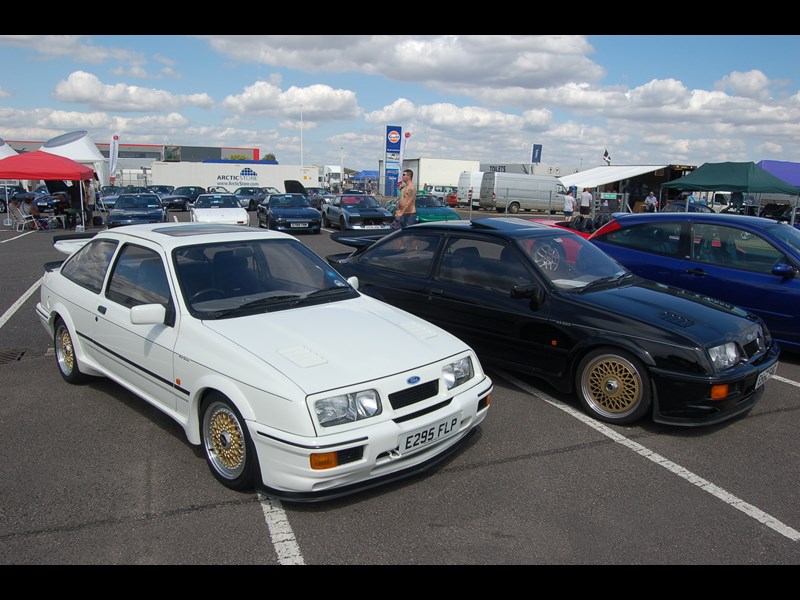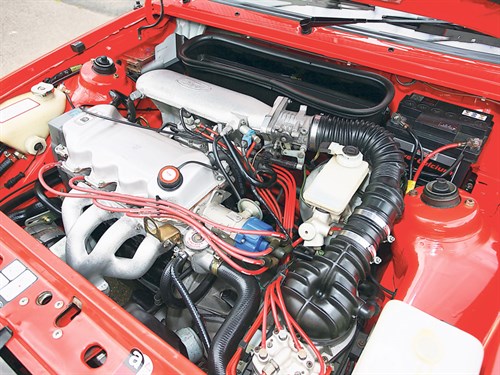Despite its name being the butt of many jokes the Probe is great cheap entry point into a classic coupé. Designed for Europeans by Americans and engineered by the Japanese, the futuristic looking Ford filled the two-door coupé market for the company. Two engines were available, a 2-litre straight four and a 2.5-litre V6. Both came from Mazda, as did the mechanicals. The probe is good-looking and well equipped – and they’re an absolute bargain.
VITAL STATISTICS
Ford Probe 2.5 V6
Engine 2497cc/6-cyl/DOHC
Power 163bhp@5600rpm
Torque 160lb ft@4800rpm
Top speed 133mph
0-60mph 7.4sec
Economy 28mpg
Gearbox 5-speed manual
WHAT TO LOOK FOR
BODYWORK
A common fault with the Probe is the pop-up headlamps. As with many 1990s coupés, if the front end of the car is damaged it can stop the headlamps from opening and closing correctly, leaving you stranded with no lights working. Watch out for corrosion in the wheel arches, and for poorly made body kits that were popular in the ‘90s.
ENGINE & GEARBOX
Both engines are Mazda, as are the gearboxes. Japanese mechanicals prove to be reliable in the Probe, although cambelts should be changed every 60,000 miles. The V6 is non-interference, meaning the piston doesn’t travel into the area where the valves open. Basically, if the cambelt fails it won’t do any major damage. The straight four is not as lucky, so it’s imperative you check if it’s been maintained. Manual and automatic transmissions are available and are robust enough for everyday use.
RUNNING GEAR
Disc brakes all round should stop the car well, but faulty rear calipers are a known problem, especially if the car’s been sat for some time. If they’re sticking it’s worth trying to loosen them, but if that doesn’t solve the problem it’s time for new calipers. Suspension is generally good but keep an eye out for non-standard pieces of kit, the same goes for alloys. They’re quite popular with young tuners. If the car’s particularly slow on the test drive it could be down to a catalytic converter problem, which can get pricey. Slipping clutches are a well-known issue. Although they can last, the only way to fix the issue is to get a new clutch fitted. Once again, pricey, and it’s worth checking the history to see when it was last changed.
INTERIOR
Window seals are a weak point on the Probe. Put it down to those elegant frameless windows. Soggy carpets and mould are a giveaway that moisture’s getting in. Replace the seals and it should fix the problem. A leaking sunroof is common, as is rust. Watch out for rust bubbles in the paintwork, and ask the owner if it’s been replaced. If the sunroof’s noisy then it can be solved by fitting some foam between the sunroof frame and roof to stop them from rubbing. Leather seats are more desirable than cloth, which is important when thinking of resale value.
ELECTRICS
Brake warning lights can flash up on the dash, and are very sensitive. One way to combat this is to check the brake fluid reservoir. If it’s not full to the brim you’ll need to fill it up to make the light go off. Immobilisers can be a problem, through various connection issues. The cheapest and easiest way to fix this problem is to bypass it completely. Remember to tell your insurance company about it though, as you might not be covered if it’s stolen.
OUR VERDICT
You want a Probe because you lust after a low maintenance, sharply styled coupé for not a lot of money. What other American V6 Coupé can you buy for £1000? For many the Probe is everything that was right about 1990s America. The Americans weren’t keen on it because it was front wheel drive, and didn’t come with a V8 – does that matter to us Europeans though? If you’re looking for an increasingly rare, cheap, alternative coupe, you’ve found it.



























































